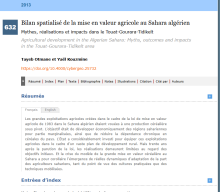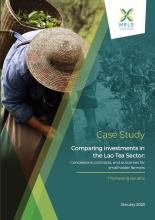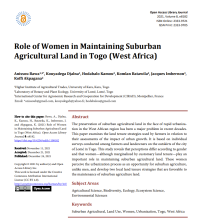Land Library Search
Through our robust search engine, you can search for any item of the over 73,000 highly curated resources in the Land Library.
If you would like to find an overview of what is possible, feel free to peruse the Search Guide.
/ library resources
Showing items 1 through 9 of 164.The Mekong Region has experienced rapid agrarian change over the past two decades, driven by public sector policies promoting agricultural commercialisation to alleviate rural poverty, provide income opportunities, and modernize agricultural production systems.
Les grandes exploitations agricoles créées dans le cadre de la loi de mise en valeur agricole de 1983 dans le Sahara algérien étaient vouées à une production céréalière sous pivot.
Après un rappel de l’héritage colonial et une critique du mythe de la prospérité coloniale, l’étude évoque les principales transformations opérées au cours des premières décennies (1960-1970) sous l’effet des politiques de réformes agraires (autogestion et révolution agraire), ainsi que les raiso
Most tea in Laos is produced by smallholder farmers, who benefit from highly suitable growing conditions and strong demand for sought-after varieties from the vast Chinese market. However, the sector faces many challenges to achieve its full potential.
This one-pager provides details on the LAND-at-scale project in Vietnam. This project is implemented by Ministry of Natural Resources and Environment (MoNRE) and RVO GRO, and financed by the Ministry of Foreign Affairs via the Netherlands Enterprise & Development Agency.
The preservation of suburban agricultural land in the face of rapid urbanization in the West African region has been a major problem in recent decades. This paper examines the land tenure strategies used by farmers in relation to their assessments of the impact of urban growth.
Woodland expansion on a significant scale is widely seen to be critical if governments are to achieve their net zero greenhouse gas ambitions. The United Kingdom government is committed to expanding tree cover from 13% to at least 17% in order to achieve net zero by 2050.
Although renewable energy holds great promise in mitigating climate change, there are socioeconomic and ecological tradeoffs related to each form of renewable energy.
The paper presents a conceptual model for the disposition of state agricultural land. The model is made as an extension of the Croatian Land Administration Domain Model (LADM) country profile.






